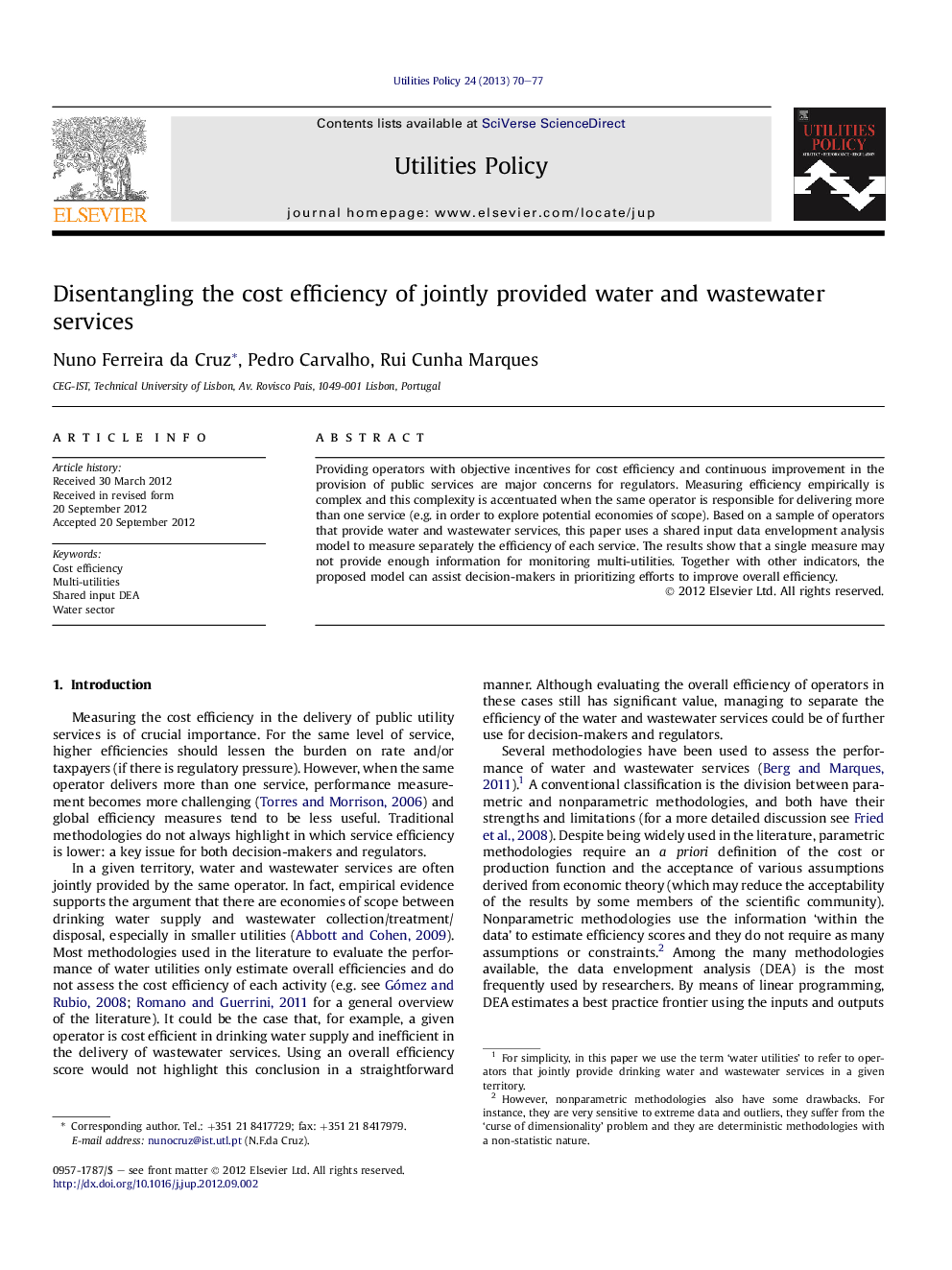| Article ID | Journal | Published Year | Pages | File Type |
|---|---|---|---|---|
| 1000310 | Utilities Policy | 2013 | 8 Pages |
Providing operators with objective incentives for cost efficiency and continuous improvement in the provision of public services are major concerns for regulators. Measuring efficiency empirically is complex and this complexity is accentuated when the same operator is responsible for delivering more than one service (e.g. in order to explore potential economies of scope). Based on a sample of operators that provide water and wastewater services, this paper uses a shared input data envelopment analysis model to measure separately the efficiency of each service. The results show that a single measure may not provide enough information for monitoring multi-utilities. Together with other indicators, the proposed model can assist decision-makers in prioritizing efforts to improve overall efficiency.
► We use a dataset of 253 observations from 45 Portuguese water utilities. ► All utilities under analysis provide drinking water and wastewater services. ► A shared input DEA model is used to measure partial and overall efficiency. ► The model allows for estimating the cost shares of the different services. ► The results provide more information for regulators and managers.
